Gongliao District, New Taipei City
Ling Jiou Mountain
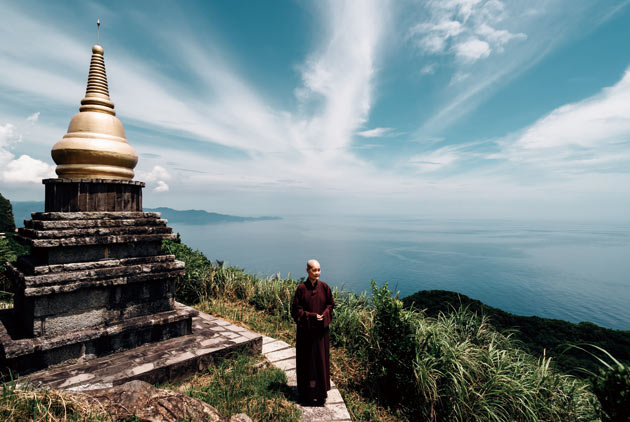
Source:Chen Chien-hao
On Laolan Mountain in the northeast corner of Taiwan is the Ling Jiou Mountain Wusheng Monastery, a place that exists in harmony with nature. The statues of the Guanyin Buddha, the Forest of Stupas, and the 500 Arhats stimulate a bright and clear state of mind, and the visitor will see how they are perfect companions for the surrounding scenery of mountains and sea, plants and trees. In view in all places throughout the monastery, amidst the mornings bells and evening drums, the mountain setting is melodious.
Views
Ling Jiou Mountain
By Chang Ya-LinSponsored Content
Spiritual Buddhist Center Under Vast Blue Skies by the Vast Blue Sea
Because of the need for spiritual cleansing, monks avoid busy cities, seeking locations for spiritual practice amongst pristine mountain forests and waterways. Hence the saying, “Monks dwell on most of the world's famous mountains.” High up on Laolan Mountain just outside of the New Taipei City town of Fulong, Ling Jiou Mountain Wusheng Monastery (hereinafter abbreviated as “Ling Jiou Mountain”) can be described as one of the best such locations. Many Buddhist facilities and sea-viewing platforms are spread over the mountainside, overlooking the rugged Northeast Coast seaside and the Pacific Ocean. The magnificent sea and mountain scenery is a must-see experience.

Upon passing through the mountain-entry point, the visitor is not met with imposing, ornate temple facilities. For example, Kaishan Hall, one of the main temples, is a simple stone building with red tiles crafted with rustic-cut stone. Surprisingly, a huge boulder sits inside the hall. According to Master Guang Chun, who is on the superintendent of the Ling Jiou Mountain Executive Council, this was specially preserved from the original period of expansion. “The Master (Master Hsin Tao) often says that every stone and tree on the mountain is one of the original residents. We are just transient guests, residing here temporarily. So our architecture needs to live in nature, instead of destroying it.”
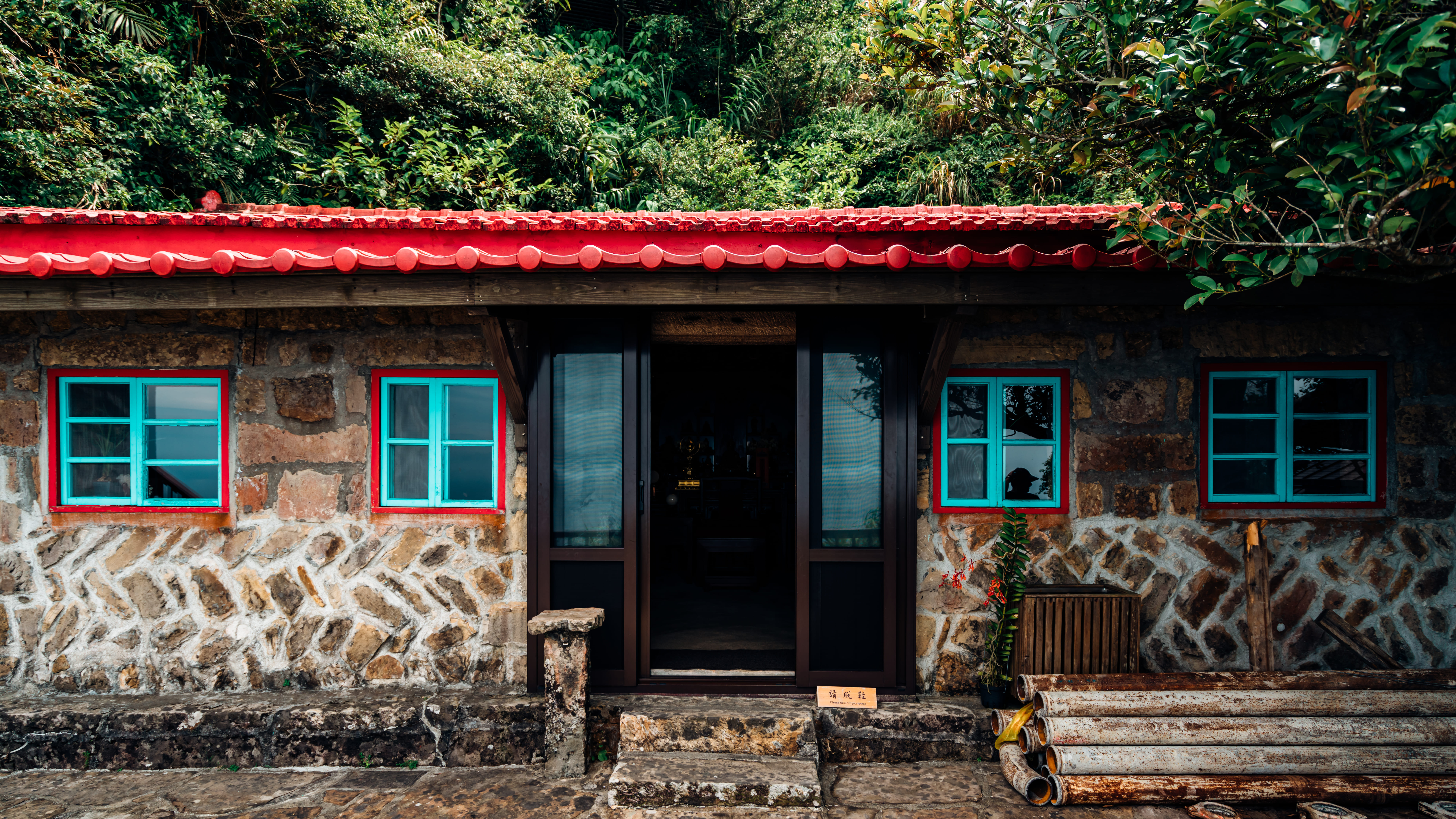
Looking to the Sea to Acquire Wisdom
Chen Song-gen, a lecturer at I-Lan Community University and Executive Director of the “Ling Jiou Mountain East District Buddhist Society,” has followed Master Hsin Tao for many years. Whenever monks shuttling back and forth spot him, they place palms together and extend a “Brother A-Gen” greeting.
Chen Song-gen says that Ling Jiou Mountain has a rhythm of four constants: spring Chan meditation, summer mantra recitation, autumn water, land, and sky blessings, winter flower blooms.
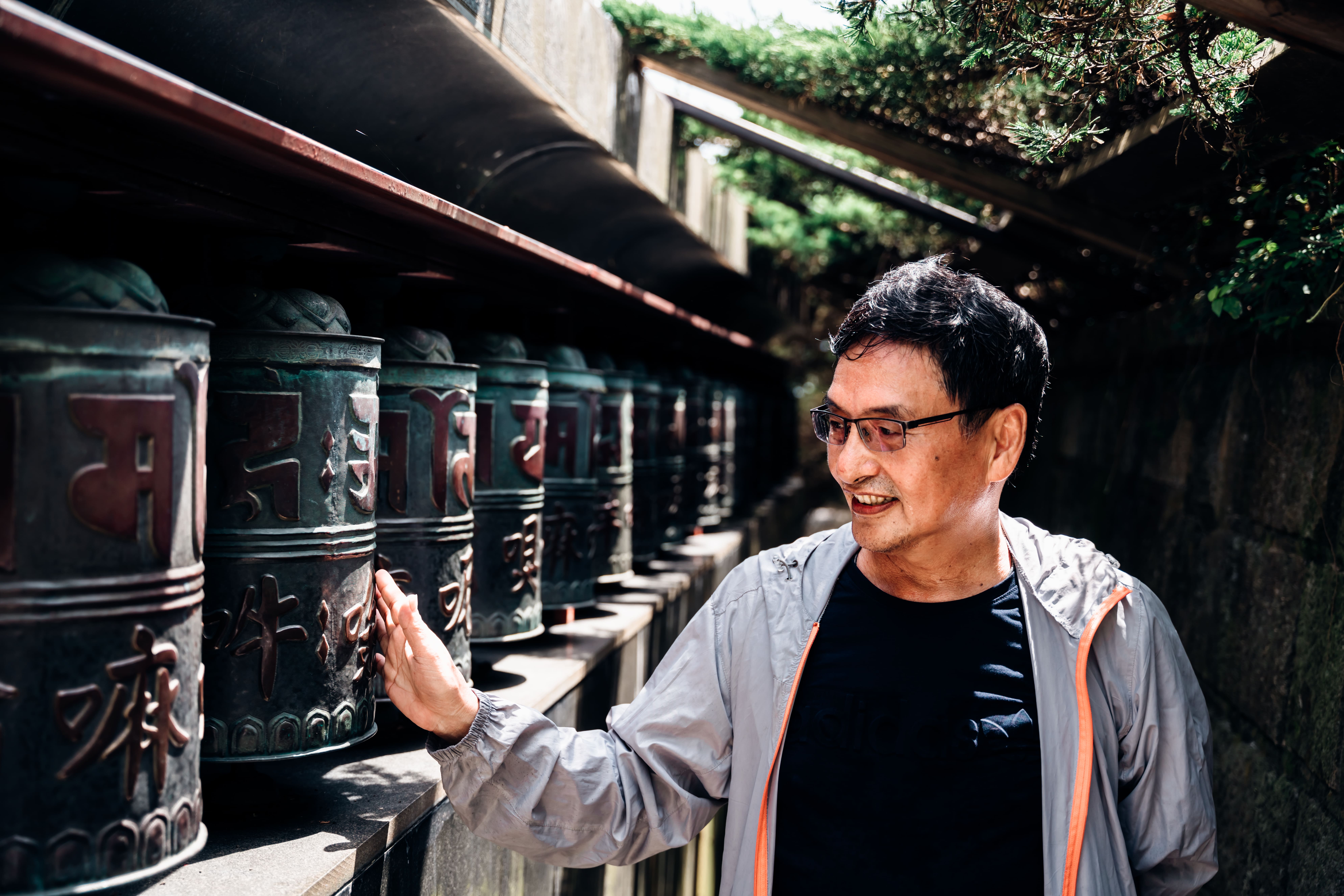
Spring Chan meditation retreats bring people physical and mental calm; summer retreat mantra recitation radiates blessings to the Earth; the autumn’s Water, Land, and Air Dharma Assembly is focused on homage to ancestors and pursuit of individual propriety, virtue, and excellence; in winter is the Huayan Sutra retreat. The “hua” character in the name is the ancient character for “flower,” and its meaning here is the making of each life into a brilliant life. The dharma does not merely possess religious connotations; behind it is a suite of philosophical language on life understanding and response.
Perched on high, with a sweeping panorama surrounded by the sea, Chen Song-gen shares something once said by Master Hsin Tao: “Waves are sometimes high and sometimes low, but the sea is still the sea; life has sufferings and life has happiness, but our heart is always our heart.” With emotion, he says that the waves are too high in the hearts of people today, and that “We should look to the sea to acquire wisdom.” Immersing yourself in the natural world, man is dwarfed, appearing small, and here the heart is opened wide.
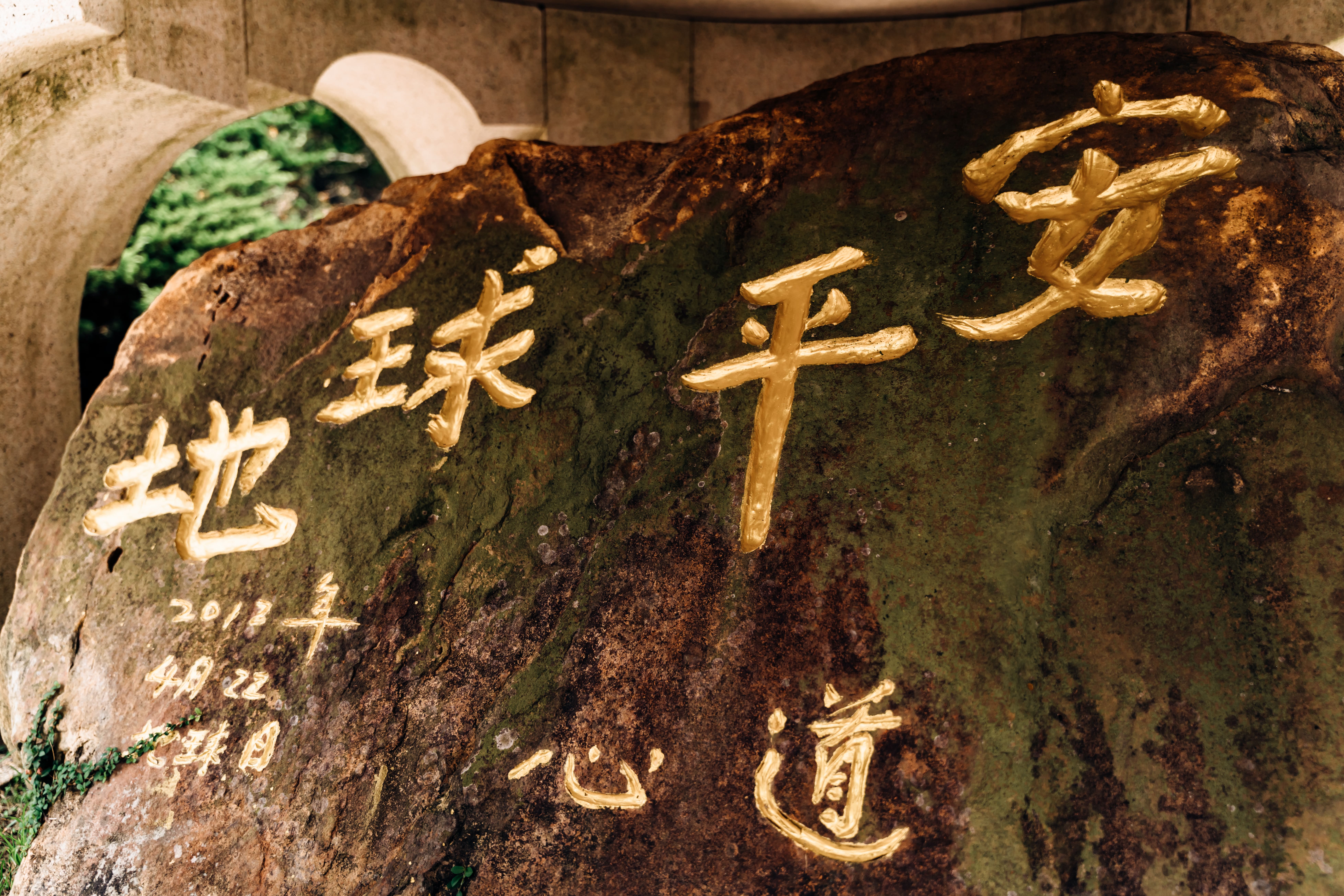
Gate of the Divine Eye – Opening to a Worldview of Goodness and Wisdom
Even before reaching the mountain entrance, from far away the tall, upright Gate of the Divine Eye is spotted. It is said that the gate’s pair of sharp and piercing eyes give people the feeling “they are being stared at no matter where they go.” Visiting in person, it is clear the name is well-deserved.
Chen Song-gen says that in ordinary life it’s common to say that “from the heart flows action and ideas.” This all begins with the reality perceived by the eyes. However, what is seen by each pair of eyes is different. In Buddhist doctrine sight ability is divided as naked eyes, heavenly eyes, wisdom eyes, dharma eyes, and Buddha eyes. “Heavenly eyes” means eyes of the void, comprehending thoroughly without limitations beyond the mundane world of the naked eye, and symbolize the compassionate eyes of the Bodhisattva, looking out for all beings. Master Hsin Tao’s goal in having the Gate of the Divine Eye erected at the complex entrance is to lead those who come through the gate of wisdom.
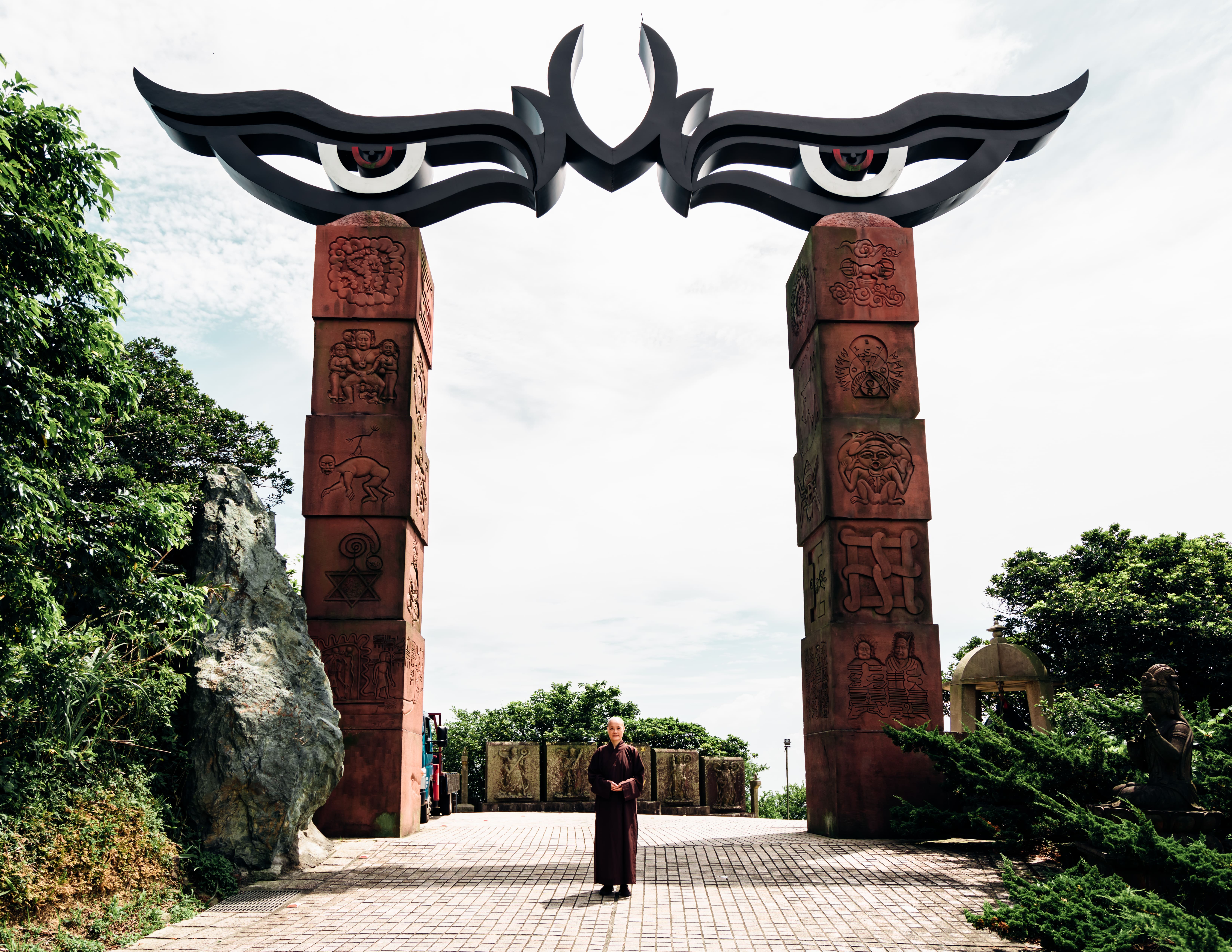
Eleven-Face Avalokiteshvara (Guanyin) Buddha – Protecting the Northeast Coast
Reached via the “Path of Giving,” the Eleven-Face Avalokiteshvara Buddha statue stands 15 meters high. This depiction is also called the Thousand-Eyed, Thousand-Armed Avalokiteshvara Buddha. Situated at the mountain’s highest point, it is strikingly eye-catching, an iconic landmark seen from far away along the North Coast Highway. Each face looks in a different direction, symbolizing the protection of living beings in the ten directions of the dharma realm. The statue is surrounded by 108 stupas, representing the subduing of 108 types of affliction and the achievement of 108 types of merit.
Here the Heart Is Rebooted
In consideration of the fact that many beginners harbor a little trepidation about Chan meditation, and are hesitant about diving into it, Ling Jiou Mountain has been offering its “Travel Chan” activity for years. A more relaxed approach is utilized, combining Chan meditation with travel. Master Guang Chun stresses that walking, sitting, and lying down are all forms of meditation. “We will choose a place that allows people to relax their body and mind naturally, using the environment as a starting point to lead people into the Chan meditation experience.” In the past most excursions were 3-day/2-night outings to Hualien/Taitung counties, including such experiences as walks by the Mawuku River, sitting meditation in a straw hut, tasting vegetarian fare made with local wild vegetables, and Buddhist chanting under the stars.

Master Guang Chun recalls enjoying walking meditation along the round-lake trail at Liyu (Carp) Lake in Hualien County, and waterside sitting meditation. “The situational atmosphere settled people’s moods. The surface of the lake was like a mirror, and while quietly enjoying the scenery you could also reflect on your inner world.”
Information:
Public transportation: Take a Taiwan Railways train to Fulong Railway Station, then walk to Xinglong Street to catch a Ling Jiou Mountain shuttle bus. Self-drive: For the mountain route from Taipei, from Shenkeng take County Highway 106, then change to Provincial Highway 2C, then change to Provincial Highway 2 (Coastal Highway) and drive east; for the coastal route, from Nangang take Provincial Highway 5, change to National Freeway 1, at Dahua System Interchange change to Provincial Highway 62, then change to Provincial Highway 2 and drive east. Arriving at the town of Fulong, after passing the Northeast and Yilan Coast National Scenic Area Administration complex, watch on the right for the entrance to the short uphill road leading to the monastery.
Ling Jiou Mountain Wusheng Monastery
No. 7-1, Xianglan St., Gongliao Dist., New Taipei City 228, Taiwan
02-24991100






